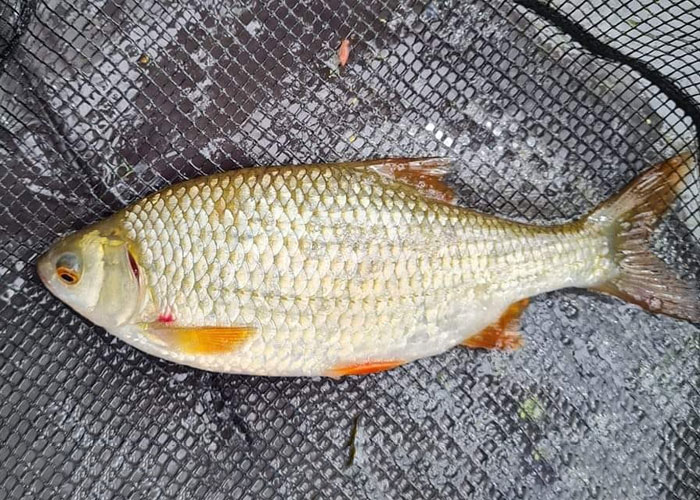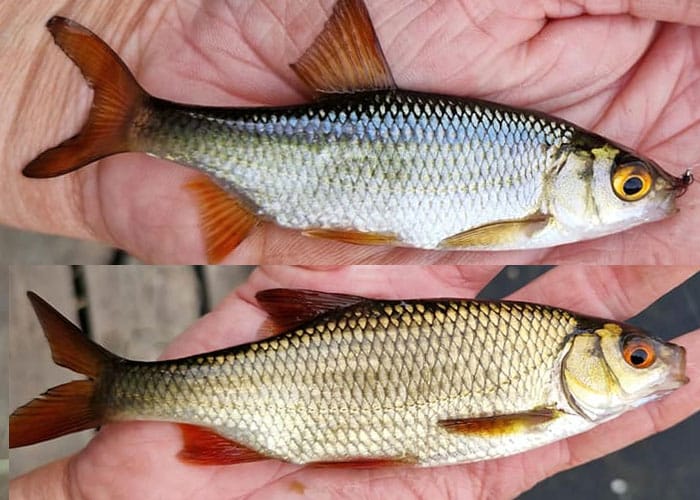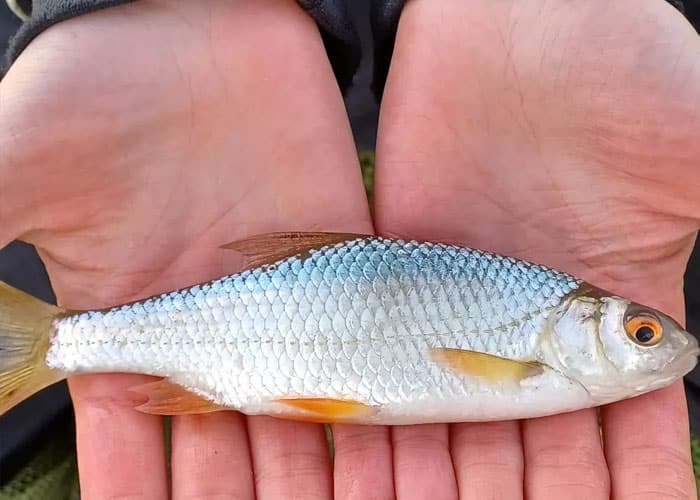Roach and rudd are popular among anglers, although distinguishing between the two can sometimes be challenging. It’s not uncommon for a freshly caught roach to be mistaken for a rudd and vice versa. This article aims to shed light on the differences between the two, aiding you in accurately identifying rudd vs roach.
The Shared Lineage of Roach and Rudd
The common roach, scientifically known as Rutilus rutilus, and the common rudd, or Scardinius erythrophthalmus, share a close biological relationship. They both hail from the Cyprinids family, commonly referred to as carp, and within this family, they belong to the same subfamily, the Leuciscinae, often known as minnows. This shared lineage and similar development over time contribute to the similarities between these two species, often making it challenging to differentiate between them.
Difference Between Roach and Rudd: Key Features to Look For
Understanding the roach vs rudd distinction boils down to observing specific vital characteristics:
Body Colouration
While body colouration can vary depending on the age and environment of the fish, general observations suggest that roach tend to have a silvery or blueish hue. At the same time, rudd display a yellowish-brown or even golden colour. However, younger roach and rudd may share a similar silvery hue, and fish from the exact location can have comparable colouration. Thus, relying solely on colour can be misleading.

Eye Colour
The eye colour of these fish can provide more reliable clues in identifying rudd vs roach. Rudd typically exhibits a washed-out, yellowish or greyish eye colour. In contrast, the eyes of a roach often boast a strong red or reddish tone. However, it’s important to note that eye colour can also vary, meaning it’s not an infallible identification method.

Body Shape and Weight
Body shape and weight can offer more consistent distinctions. Rudd tend to have a deeper body shape and consequently a heavier weight than roach approximately the same length. Rudd generally weighs around 20-30% more than a similarly-sized roach. Nonetheless, this feature too can be inconsistent in some environments where roach grow almost as deep as rudd.
Mouth Shape
The most reliable way to determine the difference between roach and rudd lies in the shape of their mouths. A roach possesses a downturned mouth, typical of many species within the carp family. This is attributed to the bottom-feeding habits of most carp species. On the other hand, rudd, while also capable of bottom-feeding, tend to hunt for smaller insects on the surface, resulting in a more upturned mouth.
Where to Fish for Roach and Rudd
Roach and rudd are often found in the same freshwater venues. They’re prevalent in various environments, from small ponds to large lakes, river systems, and even in some coastal areas around the Baltic Sea in Europe.
Fishing Techniques for Roach and Rudd
There are numerous effective techniques to catch both roach and rudd. These include bottom fishing with a quiver tip or feeder rod and using various baits such as maggots, bread, corn, hempseeds, or worms. Float fishing, especially in rivers, can be highly successful for these species. Specimen fishing is also popular, with anglers targeting larger roach and rudd using smaller-sized bolt rigs and sensitive bite indicators.
Record Breaking Roach and Rudd
In the world of British record roach, the largest roach ever caught weighed in at 4lb 4oz, captured by angler Keith Berry in Northern Ireland in March 2006. The European record roach, caught in Germany in 1981, outweighed the British record by a significant margin, weighing a staggering 5lb 12oz.
Conversely, the biggest rudd caught in the UK weighed an impressive 4lb 10oz, caught in Clay Lake in 2001. The European record, again from Germany, surpasses the British one, with a rudd caught in 1976 that weighed more than a pound more than the British record.
Fish Related to Roach
Other fish related to roach include species like chub, dace, bream, and barbel, all belonging to the same Cyprinids family. Like roach, these species share similar habitats and display certain similarities in behaviour and appearance.
In conclusion, while the roach and rudd share a close biological relationship and present similarities, careful observation of features like body colouration, eye colour, body shape, weight, and, most reliably, mouth shape can help distinguish between the two. Whether an amateur angler or a seasoned veteran, understanding the difference between roach and rudd can enhance your fishing experience and bolster your angling knowledge.





